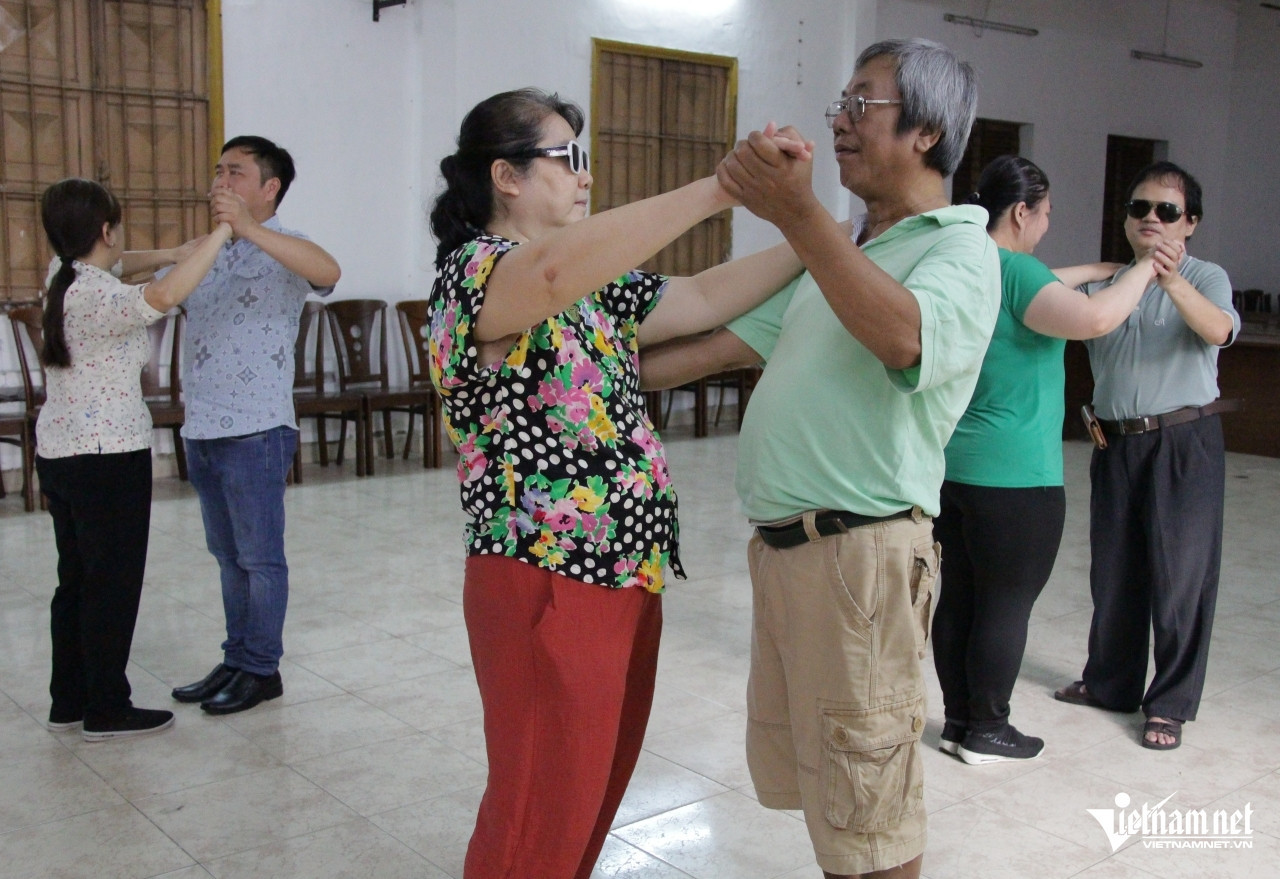
At 1.45 pm, Dao Xuan Quynh Trang, 38, in district 1, HCM City arrived to the free dance class for the blind at the headquarters of the HCM City Association for the Blind, organized by Tran Quoc Tu, a National Dancesport Coach.
Upon arrival, she quickly stored her glasses and found her seat against the wall. She chatted with fellow students, eagerly waiting for the class to start.
At 2.00 pm, the class started. Coach Tu gave the signal, and the students stood about a meter apart to warm up. A few minutes later, music filled the room, and the students paired up, wrapping their arms around their dance partners.
Everyone was seen taking steps forward, backward, left, right in time with Coach Tu's counts. In the darkness, they passionately practiced the dance they learned months before.
Tu said he thought of opening the free dance class for the blind four years ago. However, because of the pandemic, he could not implement his plan.
In 2024, when conditions became more favorable, he collaborated with the HCM City Gymnastics Federation and the HCM City Association for the Blind to open the class on Friday afternoons.
There are 20-40 learners in his dance class, aged 30-60. Most are low-income workers struggling to make a living.
"Visually impaired people face many disadvantages. They rarely have opportunities to participate in sports and recreational activities,” Tu said.
“Even if they do, they lack confidence and live with a sense of inconvenience, feeling like they burden others. When I learned that visually impaired people like dancing, I decided to offer a free class to bring joy into their lives," Tu explained.
New joy
Teaching dancing to the blind for the first time, Tu has to design a specific curriculum. Initially, he guided students to locate their positions and practice stepping right, left, forward, backward, and turning.
To help students visualize and grasp techniques, he let them touch his legs, abdomen, and arms. The method allows them to feel and remember how he lifted his arms, stepped, and moved his body while dancing.
He then went around counting beats and correcting the posture and mistakes of each student. Once they became familiar with the steps and moved in time with the count, he played music for them to practice with.
"Teaching dance to visually impaired students is challenging and time-consuming. It takes them 2-3 months to learn and practice a dance,” he explained.
“However, I come to the class every Friday with the thought that it's the work I love. I’m happy doing what I want, so I don't feel tired or pressured. After a year, they have learned five basic dances from the 10 dances in the Dancesport system," he said
Trang was one of the first enrolled in the class. After initial days of confusion, stepping on her partner’s feet, and bumping into walls, she is now one of the best.
More importantly, she has shed her shell of self-doubt. In the class, she communicates and connects with those who share similar circumstances.
She feels more confident and has overcome her inferiority complex. She finds joy in life and even feels proud for having discovered a new passion and ability.
Meanwhile, Tran Kinh Doanh, 58, said that he has fulfilled a dream and found new joy in life.
Doanh has been fond of music since childhood. Whenever the music plays, he jigs and sways to the beat of the drums. However, he never thought that he could dance until the day he joined the class.
"Since learning to dance, I’ve been very happy. All loneliness and sadness in me have disappeared. Now, I find dancing a source of joy in my life and enjoy it daily," he confided.
Do Huu Truong Giang, Vice Chair of the HCM City Association for the Blind, said the one-year-old dancing class for the blind has an important significance as it provides a suitable sport for visually impaired people and helps them find confidence and joy in their lives.
Ha Nguyen